In this ever-increasing digital age, are guidebooks still worth buying? When you can research online, information is literally at your fingertips for free. When travel planning there are endless travel blogs and review sites to get information from. So why bother with guidebooks? Personally, I do still use guidebooks when I travel and I think you should too. Keep reading to find out why.
Why I Still Use Guidebooks
For me, guidebooks are still a vital part of my travel planning, such as my Mexico trip planning. Don’t get me wrong, I do also check out other travel blogs and review sites, but I definitely don’t discount them because they’re not digital.
Here are some of the reasons I still use guidebooks:
A Wide Scope
As guidebooks are produced using a number of researches, they have a wide scope. They list varying accommodation, restaurants and tours, all at different price ranges.
I find that many blogs that rank for destinations tell you very much the same thing (though this is not true for all bloggers). I have seriously been through the top ranking blogs when researching and found them to give exactly the same information of what to see in a city. It’s like they all followed each other and did exactly the same trip.
Another limitation with blogs is that they may (not all do this) only recommend accommodation, tours etc that they can earn an affiliate commission with. Personally, I am happy to send you off to sites that I earn no commission from if I have done a tour with them, but I will also check if I can send you via Get Your Guide first. If I can’t I won’t neglect writing about the company or place, though this is not true for all bloggers and so limits their recommendations.
Guidebooks, on the other hand, are put together after months, even years, of research, by several people, not just the one trip, and so have a lot more to them. In fact, I have done a couple of trips and not had a chance to get a guidebook, and will honestly say that I felt that I missed things.
Physical Book
Personally, I love a physical book. And when I’m travel planning it makes it so much more exciting to hold the book and smell the paper. Or is that just me?
Being physical also makes them so much more personal. When you use a guidebook to plan you can scribble on them, fold pages, circle places. This turns it into a very personal souvenir at the end of your trip.
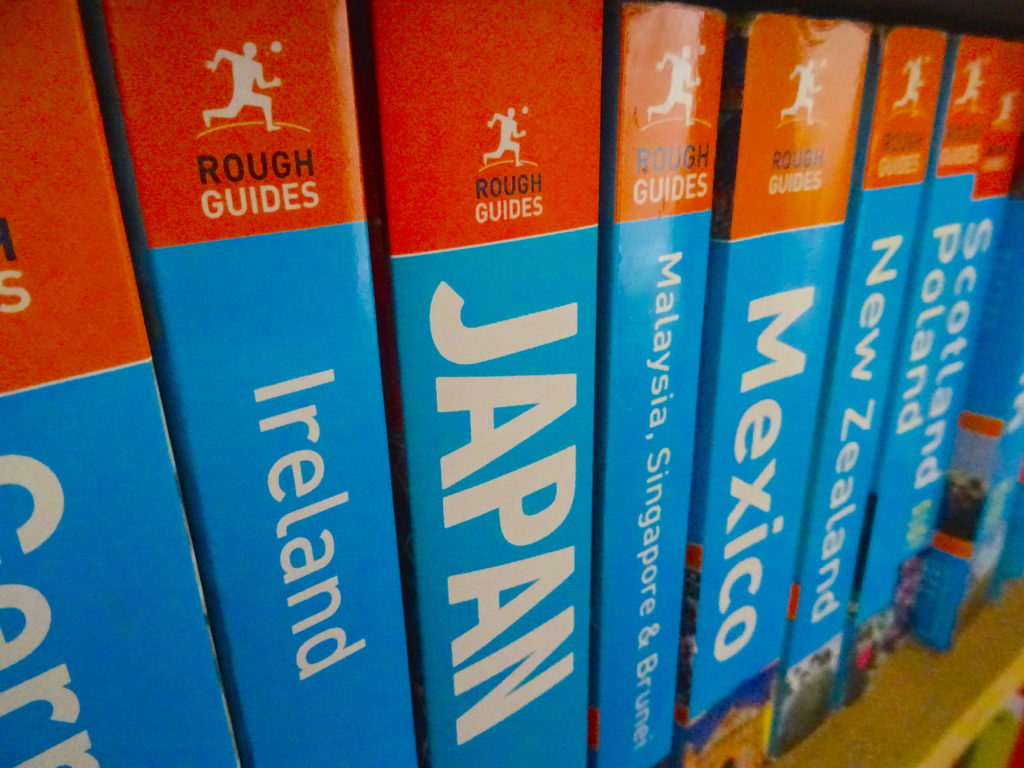

Guidebooks Themselves Make Great Souvenirs
PDF Versions
Many guidebook brands have jumped on the digital bandwagon, which makes using them much easier. For many, if you buy a guide book, you can also download a PDF version of the book. So you literally get the best of both worlds!
This also means that if you decide not to carry a physical book with you on your trip, you still have access. And even better, you don’t even need wifi to access it.
So Much More In One Place
Guidebooks give you so much more when planning a trip. Blogs will give you a good overview, but guide books go into language, history, food and culture in much more depth. And it’s all in one place. You don’t have to save a load of links or different sites, instead, everything is in one place.
Having that extra bit of information can really help out in a place. For example, it was only because of a guidebook that I learnt about Osterias in Italy. In all my other research when looking for places to go at night it was all bars and restaurants, nowhere else mentioned Osetrias, which are a huge part of Italian culture.
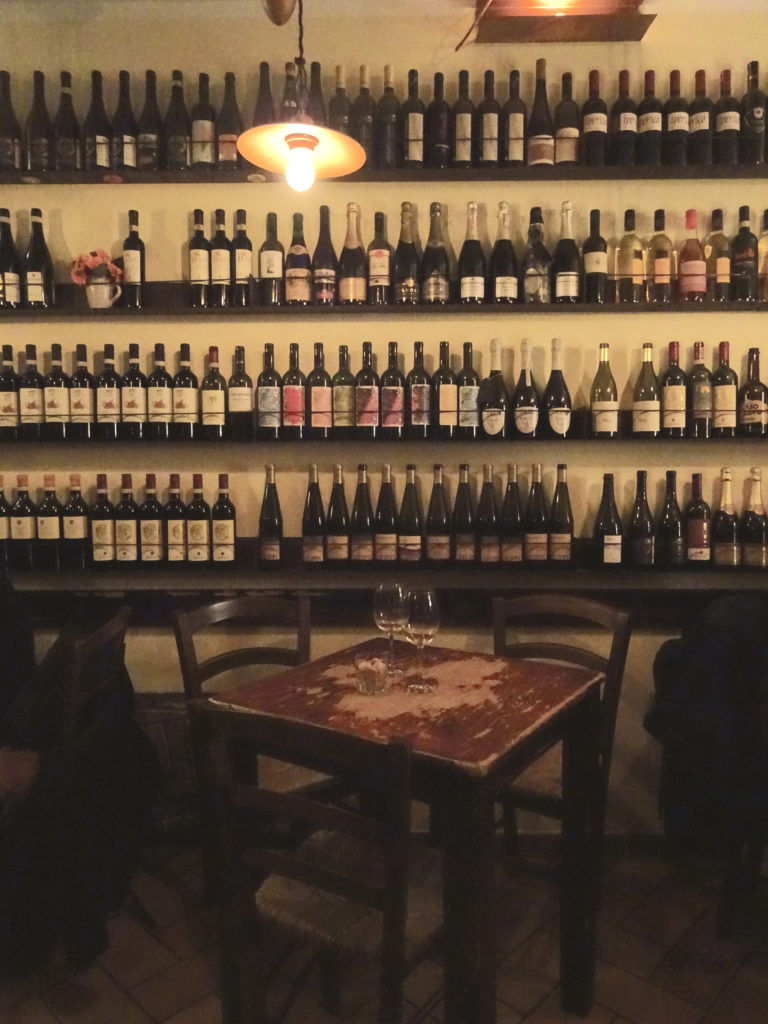

I Wouldn’t Have Learnt About Osterias If It Weren’t For Guidebooks
The Cons Of Using Guidebooks
I admit, there are arguments against using guidebooks. They do come with cons, just like everything else. Here are some negatives:
Heavy To Carry
If you’re trying to travel light, or are doing a multi-city trip, the thought of lugging around a guidebook might not appeal to you. And I completely understand. They take up room in your backpack and are pretty heavy.
However, as previously mentioned, many brands now come with a free PDF version when you buy the physical book. Many brands also allow you to simply buy PDF chapters. So you can easily put this worry aside.
Out Of Date
One common complaint about guidebooks is that they are often out of date by the time they are published. And I will admit, this tends to be true.
However, they are meant to be a guide, so they won’t be perfect. I accept this limitation and always take any prices with a pinch of salt. To me, the prices aren’t a majorly important part of my planning. Also, guidebooks will have the website and phone number of places listed, so you can easily check for updated prices.
Not Great On A Tour
If you are on an organised tour, guidebooks can give you a bit of extra information, but overall they’re not great on trips like this. Tour guides will give you information and even if you have free time they’ll give you ideas of what to do. In these situations, there isn’t much point of a travel guide book, but there’s also not much point in doing too much research anyway.
It Goes To Some Companies’ Heads
Not the guidebooks fault, but something I have noticed on my travels, being in a guidebook can cause companies to take advantage. You can expect prices to rise a little over time, but some places seem to see that they are in a guidebook and decide that they can add a premium. So you go to a place and expect a nice little place, with decent prices and something special about it, only to find that it is now ten times the price and the staff (and owners) no longer care.
The Best Travel Guide Books
For me, there is only one guidebook brand that I use. And that is Rough Guides. I find that people either like Lonely Planet or Rough Guides, and I am all for Rough Guides.
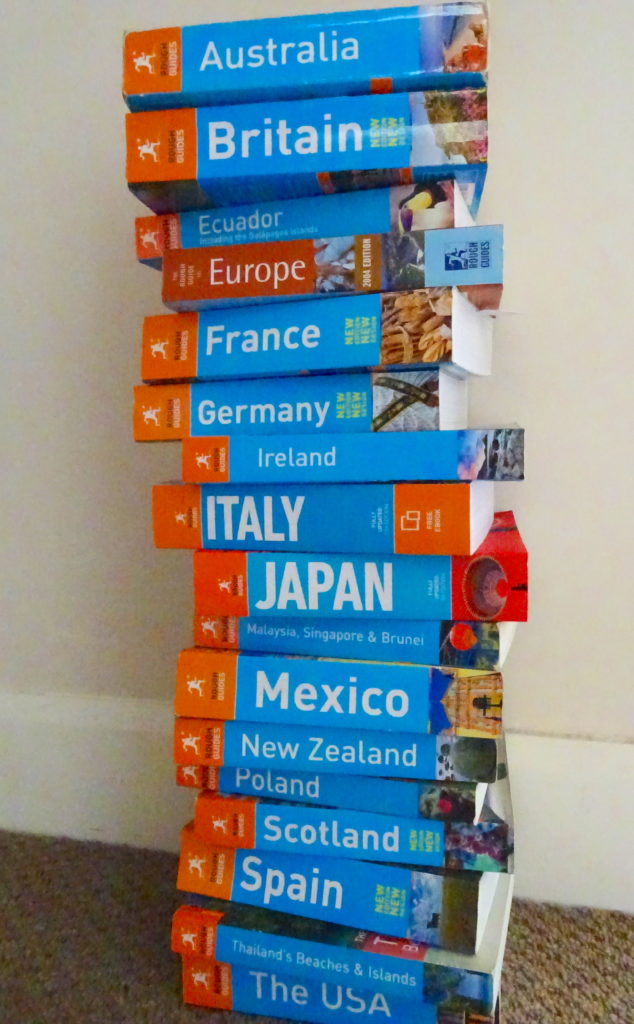

My Guidebook Collection Is Purely Rough Guides
I started using Rough Guides when I was planing my first Gap Year. And since then I always pick one up when planning a trip (apart from the odd short break where I haven’t had the chance). This is true even when I go back to a place! A Rough Guide is top of my list for planning a trip. Here are some reasons why I love this guidebook brand:
Logical Layout
I like things to make sense. Whether this is a museum layout or a guidebook. And for me, Rough Guides make sense in their layout. It starts with the basics, such as how to get there, culture, food etc. Then the first area that it focuses on is the capital city and surrounding area.
Once the capital is finished, the guidebook starts in an area and makes its way around the area in a logical manner. It then goes around the country in a logical order, going from one area to a neighbouring area.
Travel Times
For all journeys in the Rough Guides, they give travel times. This is really useful when planning. And it’s not just an average time, they give the range. So if you can catch a fast train or slow train, you know the difference of times.
Aimed At All Budgets
Rough Guides have a wide range of activities, accommodation and restaurants in them. It’s not just luxury and not just budget. So you can get a real idea of how much you will spend on a trip. It also doesn’t restrict you to your usual budget, so if you want to treat yourself one night, you have an idea of where you can go that is a little higher budget. Or if you’ve overspent, you can look at lower budget cafes to save a bit more.
Detailed Maps
If there’s one thing a guidebook needs its decent maps. And Rough Guides have good, detailed maps.
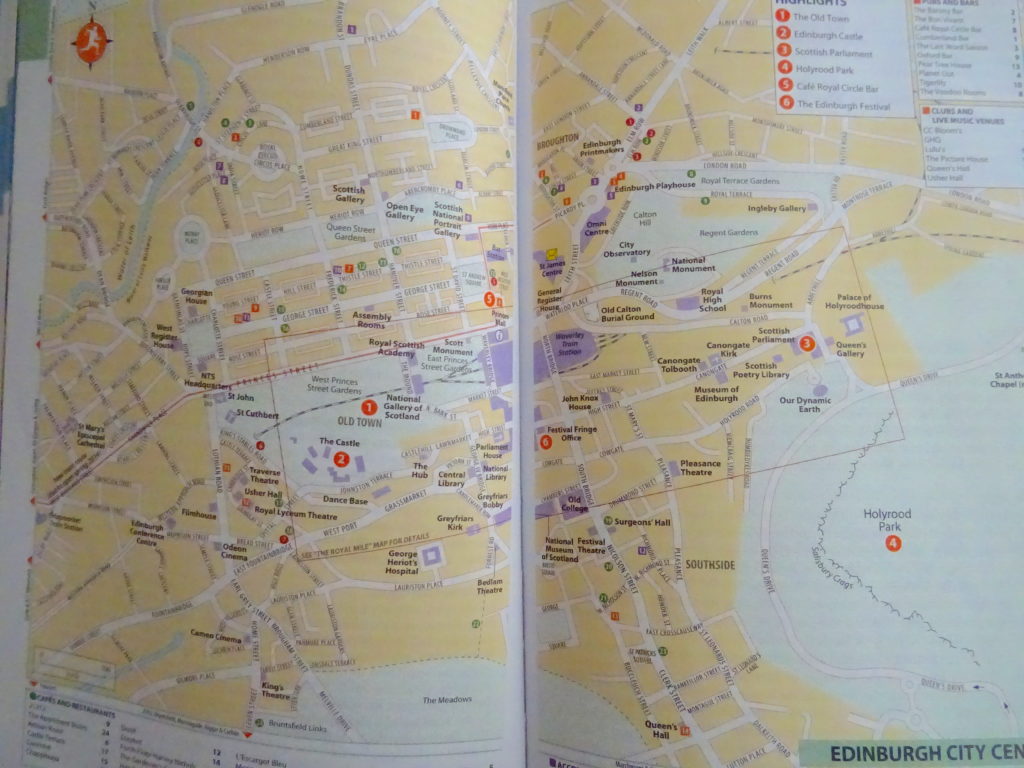

A Detailed Map Of Edinburgh In A Rough Guide
Rough Guides have maps of each area (and the whole country). Each city and many larger towns have a detailed map too. These maps have tourist attractions, accommodation and restaurants marked on it. For big cities, such as capital cities, popular areas also have their own maps too. Metro and underground lines are also included and may have their own image, which helps you to make sense of these networks.
Tone Of Voice
What really draws me to the Rough Guides is the tone of voice. It’s extremely casual and friendly. What’s more, it’s honest. Very honest. Which I think is very important. Just because something is a popular tourist attraction Rough Guides won’t sing its praises unless it is deserved.
An example of this is Juliet’s House in Verona. Juliets’ Balcony is extremely popular and many people will go in the museum too. But the Rough Guide describes the museum as a “reek of desperation”. And to be fair, what can a museum of a fictional character have in it?
Basic Information
The basic information you get in Rough Guides is in-depth and extremely useful in the original planning phase.
Basic information of the country gives you an idea of transport around a country, what festivals there are, the food you can expect (and whether certain diets may encounter difficulties), and what accommodation is like. The guide book also covers essentials, such as whether the tap water is safe to drink. I didn’t find this information easily anywhere else, so I was very thankful that it was in the Rough Guide.
Special Picks
These guidebooks also point out extra special things in a country and area. The start of the book has things not to miss and the start of each area also has a selection of what’s not to miss. These can be events, museums, natural places, food or something cultural. I always check these out and go to them if I have time. There have been times when I’ve thought these picks weren’t really for me, but I have been wowed.
For instance, in the Mexico Rough Guide, in Mexico City, they state that Palacio de Bella Artes is not to miss. I am not a huge art gallery fan in general, but decide to have a look. And this art gallery is definitely one not to be missed.
There are also stars next to certain restaurants, cafes and accommodation. This shows that they are an author pick. These picks tend to have something extra special about them. An example of this is Osteria La Mandorla in Verona. Going to this osteria was like going back in time!
Free E-Book
When you buy a Rough Guide you also get access to a free E-book of the same guidebook. This is really useful for short trips as it means you don’t have to take a heavy guidebook with you. Being able to have the book on your phone is a great help for short trips.
If I’ve convinced you that Rough Guides are the guidebook to go for, buy yours here to plan your next trip.
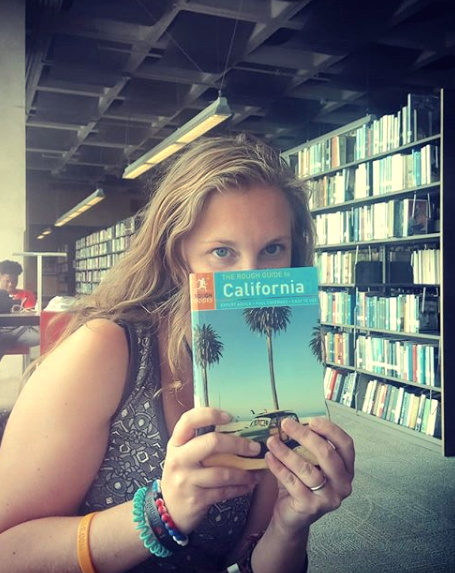

In California I Didn’t Have A Guidebook, So I Found One In A Library
So is it still worth using guide books in this digital age? For me, it is a yes. I still use guidebooks and can’t see a time where I won’t. Having a guidebook at home for a starting point of research I find really useful. Especially having not only information about tourist attractions and lesser-known destinations in one place but also important information about the culture and country as a whole. Don’t get me wrong, blogs and review sites are useful, but I think that guidebooks still have a place in travel planning.
Do you still use guidebooks? Are you a Lonely Planet, Rough Guide or another brand fan? Tell me your thoughts in the comments below.
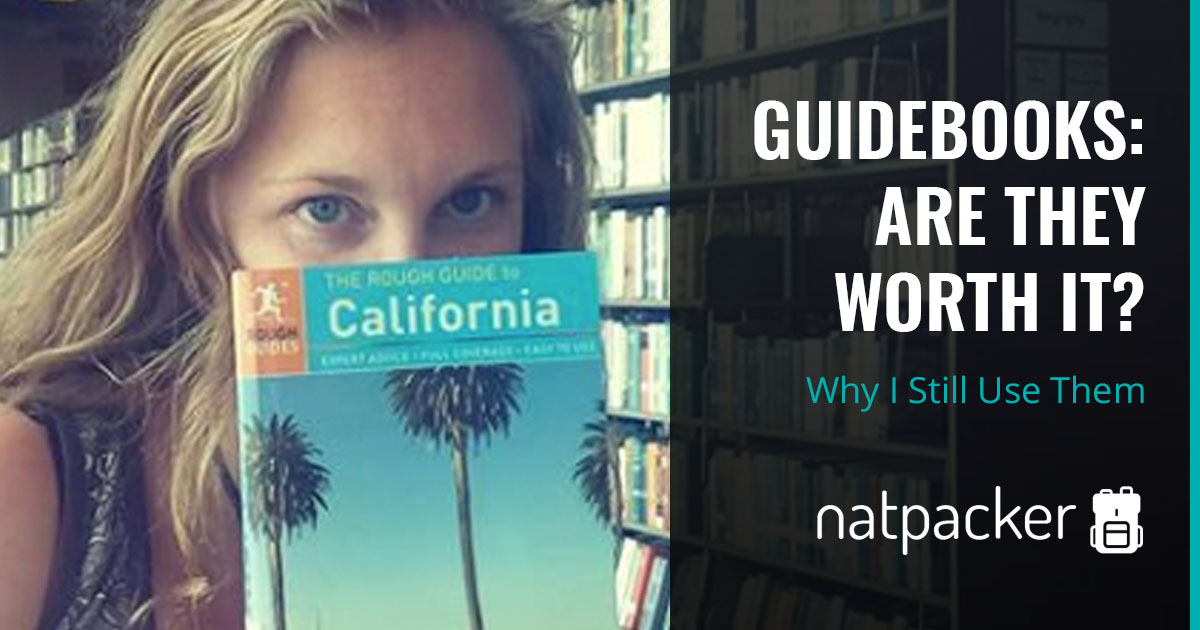

4 Comments
Great information. Lucky me I ran across your site by accident (stumbleupon).
I have bookmarked it for later!
Glad you found my blog useful 🙂
Thanks for this great article. I am in the beginning stages of writing a local city guide for Vancouver Washington and truthfully I hadn’t even heard of “Rough Guides” before so now I will definitely check them out even though they cover whole countries versus a city.
Loved your q & a format. Answered some questions I was specifically looking for which I guess is why your post came up first in my search.
Hi Patty, thanks for your kind words! So glad you found my post helpful 🙂
I think you can get some Rough Guides that just cover a city, but I think it’s mainly capital cities like London.
Good luck with your city guide!